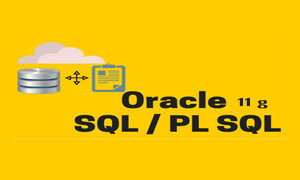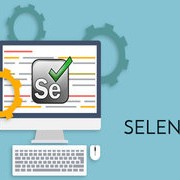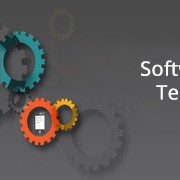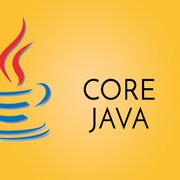Description
MySQL Database Administrators -Introduction
Introductions
Clientage
MySQL Database Server Editions
MySQL Enterprise Edition
MySQL Connectors and APIs
MySQL Services
Community Support
MySQL-Supported Operating Systems
MySQL Websites
MySQL Certification
MySQL Online Documentation
Architecture
MySQL Architecture
MySQL Interface Programs
Utility Programs
MySQL Server Architecture
Server Process
Connection Layer
Communication Protocols
SQL Layer
SQL Statement Processing
Storage Layer
Storage Engine:
How MySQL Uses Disk Space
How MySQL Uses Memory
Memory Structures
System Administration
MySQL Binary Distributions
MySQL RPM Installation Files for Linux
Linux MySQL RPM Installation Process
Linux MySQL Server Installation Directories
Starting the MySQL Server on Linux
Stopping the MySQL Server on Linux
Improving Installation Security
Windows MySQL Server Installation Directory
Running MySQL on Windows
Data Directory
MySQL Server Releases
Server Configuration
MySQL Configuration Options
Reasons to Use Option Files
Option File Groups
Writing an Option File
Option File Locations
Sample Option Files
Displaying Options from Option Files
Obscuring Authentication Options
Server System Variables
Dynamic System Variables
Displaying Dynamic System Variables
Structured System Variables
Server Status Variables
SQL Modes
Setting the SQL Mode
Common SQL Modes
Log Files
Log File Usage Matrix
Binary Logging
Binary Logging Formats
List Binary Log Files
View Binary Log Contents
Deleting Binary Logs
Clients and Tools
Command-Line Client Programs
Invoking Command-Line Clients
Connection Parameter Options
Invoking mysql Client
mysql Client: Safe Updates
mysql Client: Output Formats
mysql Client: MySQL Client Commands
mysql Client: SQL Statements
mysql Client: Help on SQL Statements
mysql Client: SQL Statement Terminators
mysql Client: Special Statement Terminators
mysql Client: Redefining the Prompt
mysql Client: Using Script Files
mysqladmin Client
Invoking the mysqladmin Client
MySQL Tools
MySQL Workbench
MySQL Workbench: GUI Window
MySQL Workbench: Access
MySQL Connectors
Third-Party APIs
Data Types
Data Types: Overview
Creating Tables with Data Types
Numeric Data Types
Character String Data Types
Character Set and Collation Support
Binary String Data Types
Temporal Data Types
Spatial Data Types
Setting Data Types to NULL
Creating Tables with Column Attributes
Column Attributes
Choosing Data Types
Obtaining Metadata
Metadata Access Methods
INFORMATION_SCHEMA Database
INFORMATION_SCHEMA Tables
INFORMATION_SCHEMA Table Columns
Using SELECT with INFORMATION_SCHEMA
INFORMATION_SCHEMA: Examples
Creating Shell Commands with INFORMATION_SCHEMA Tables
Creating SQL Statements with INFORMATION_SCHEMA Tables
MySQL-Supported SHOW Statements
SHOW Statement: Examples
Additional SHOW Statement Examples
DESCRIBE Statement mysqlshow Client mysqlshow: Examples
Transactions and Locking
Transactions
Transaction Diagram
ACID
Transaction SQL Control Statements
SQL Control Statements Flow: Example
AUTOCOMMIT Mode
Implicit Commit
Transactional Storage Engines
Transaction Isolation Problems
Isolation Levels
Isolation Level Problems
Setting the Isolation Level
Global Isolation Level
Transaction Example: Isolation
Locking Concepts
Explicit Row Locks
Deadlocks
Transaction Example: Deadlock
Implicit Locks
Storage Engines
Storage Engines and MySQL
Available Storage Engines
InnoDB Storage Engine
InnoDB as Default Storage Engine
InnoDB Features
Displaying the Storage Engine Setting
Setting the Storage Engine
Converting Existing Tables to InnoDB
InnoDB System Tablespace
Data Tablespaces
Tablespace Directory Structure
Shared Tablespace Configuration
Log Files and Buffers: Diagram
Configuring Buffer Pools for Performance
NoSQL and the memcached API
Configuring memcached
Key/Value Data
Using NoSQL with MySQL Databases
Referential Integrity
Multi-Versioning
Locking
Reduce Deadlocks
MyISAM Storage Engine
MEMORY Storage Engine
ARCHIVE Storage Engine
BLACKHOLE Storage Engine
Partitioning
Partitioning
Partitioning Analogy
MySQL-Specific Partitioning
Partitioning Types
Partitioning Support
Improving Performance with Partitioning
Improving Performance with Partitioning: Pruning
Performance Challenges with Partitioning
Basic Partition Syntax
RANGE Partitioning
LIST Partitioning
HASH Partitioning
KEY Partitioning
Subpartitioning
Obtaining Partition Information
Altering a Partition
Redefining the Partitioning Type
Dropping Partitions
Issues with Using DROP PARTITION
Removing Partitioning
Performance Effects of Altering a Partition
Partitioning: Storage Engine Features
Partitioning and Locking
Partitioning Limitations
Partition Expression Limitations
User Management
Importance of User Management
User Account Verification
Viewing User Account Settings
Native Authentication
Creating a User Account
Host Name Patterns
Setting the Account Password
Confirming Passwords
Manipulating User Accounts
Pluggable Authentication
Client-Side Cleartext Authentication Plugin
Loadable Authentication Plugins
PAM Authentication Plugin
Password Validation Plugin
Authorization
Determining Appropriate User Privileges
Granting Administrative Privileges
GRANT Statement
Display GRANT Privileges
User Privilege Restrictions
Grant Tables
Use of Grant Tables
Effecting Privilege Changes
Revoking Account Privileges
SHOW PROCESSLIST
Disabling Client Access Control
Setting Account Resource Limits
Security
Security Risks
MySQL Installation Security Risks
Network Security
Password Security
Operating System Security
File System Security
Protecting Your Data
Using Secure Connections
SSL Protocol
Using SSL with the MySQL Server
Starting the MySQL Server with SSL
Requiring SSL-Encrypted Connections
Checking SSL Status
Advantages and Disadvantages of Using SSL
Secure Remote Connection to MySQL
MySQL Security FAQ
Table Maintenance
Implementation of Table Maintenance
SQL for Table Maintenance Operations
ANALYZE TABLE Statement
CHECK TABLE Statement
CHECKSUM TABLE Statement
OPTIMIZE TABLE Statement
REPAIR TABLE Statement
mysqlcheck Client Program
Options for mysqlcheck and myisamchk
InnoDB Table Maintenance
MyISAM Table Maintenance
MEMORY Table Maintenance
ARCHIVE Table Maintenance
Exporting and Importing Data
Exporting and Importing Data
Exporting Data by Using SELECT with INTO OUTFILE
Using Data File Format Specifiers
Escape Sequences
Importing Data by Using LOAD DATA INFILE
Importing Data from the Client Host
Skipping or Transforming Input Data
Duplicate Records
Programming Inside MySQL
Stored Routines
Uses of Stored Routines
Stored Routines: Issues
Executing Stored Routines
Stored Procedure: Example
Stored Function: Example
Examine Stored Routines
Stored Routines and Execution Security
Quiz
Triggers
Create Triggers
Trigger Events
Trigger Error Handling
Examining Triggers
Dropping Triggers
Restrictions on Triggers
Trigger Privileges
Quiz
Events
Schedule
Event Scheduler and Privileges
Event Execution Privileges
Examining Events
Dropping Events
MySQL Backup and Recovery
Backups with MySQL
Logical (Textual) Backups
Physical (Raw or Binary) Backups
Replication-Based Backups
Binary Logging and Incremental Backups
Backup Tools: Overview
MySQL Enterprise Backup mysqlbackup
Restoring a Backup with mysqlbackup mysqlbackup Single-File Backups
Restoring mysqlbackup Single-File Backups
Privileges Required for mysqlbackup
mysqlhotcopy
Raw InnoDB Backups
Raw MyISAM and ARCHIVE Backups
mysqldump
Consistency with mysqldump
mysqldump Output Format Options
Restoring mysqldump Backups
Privileges Required for mysqldump
Backing Up Log and Status Files
Replication as an Aid to Backup
Comparing Backup Methods
Backup Strategy
Processing Binary Log Contents
Replication
MySQL Replication
Replication Masters and Slaves
Complex Topologies
Replication Use Cases
Replication for High Availability
Configuring Replication
CHANGE MASTER TO
Failover with Log Coordinates
Global Transaction Identifiers (GTIDs)
Replication with GTIDs
Failover with GTIDs
Replication Filtering Rules
MySQL Utilities
MySQL Utilities for Replication
Asynchronous Replication
Replication Logs
Crash-Safe Replication
Replication Threads
Controlling Slave Threads
Monitoring Replication
Replication Slave I/O Thread States
Replication Slave SQL Thread States
Troubleshooting MySQL Replication
Introduction to Performance Tuning
Factors That Affect Performance
Monitoring
Performance Schema
Instruments, Instances, Events, and Consumers
General Database Optimizations
PROCEDURE ANALYSE
EXPLAIN
EXPLAIN Formats
Examining Server Status
Top Status Variables
Tuning System Variables
Top Server System Variables
Preparing for Tuning
Tuning in Practice
Tuning Example: Sort Buffer Size
Conclusion
Course Goals
MySQL Certification
MySQL Resources 19-7
Duration & Timings :
Duration – 30 Hours.
Training Type: Online Live Interactive Session.
Faculty: Experienced.
For Upcoming Schedules Please Contact Us
Inquiry Now Discount Offer
USA: +1 734 418 2465 | India: +91 40 4018 1306
























 +91 40 4018 1306
+91 40 4018 1306 +1 734 418 2465
+1 734 418 2465 info@learntek.org
info@learntek.org
Reviews
There are no reviews yet.